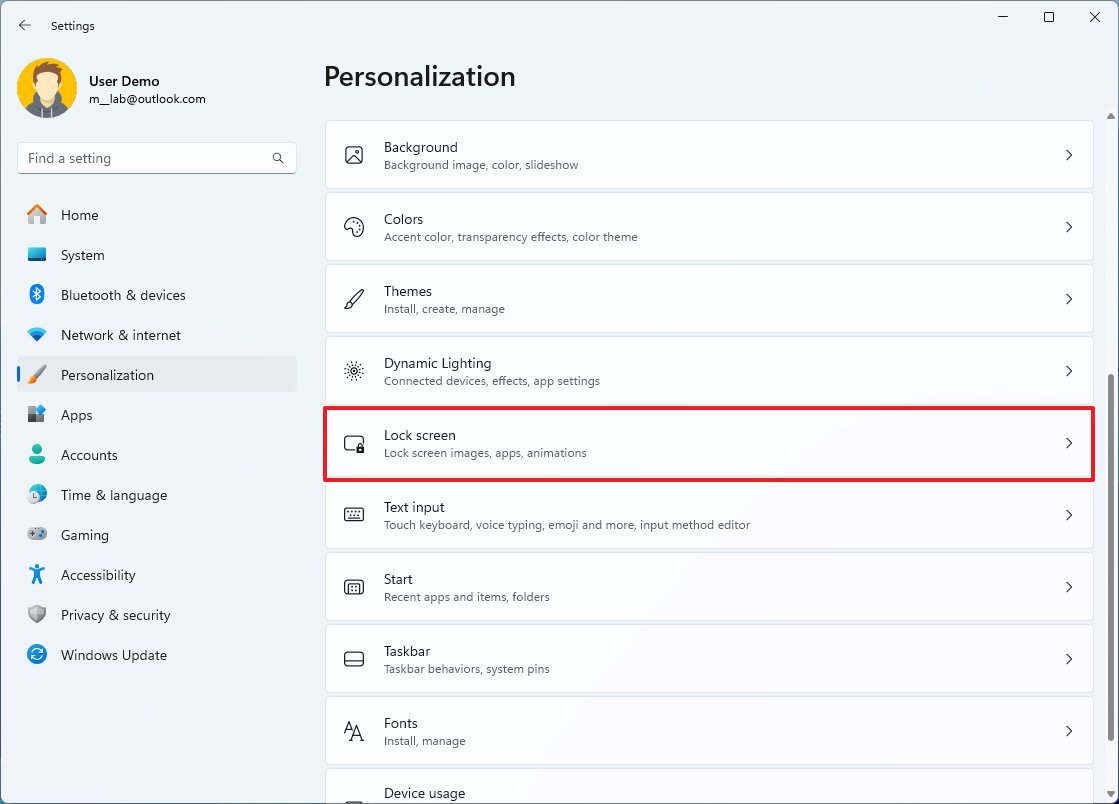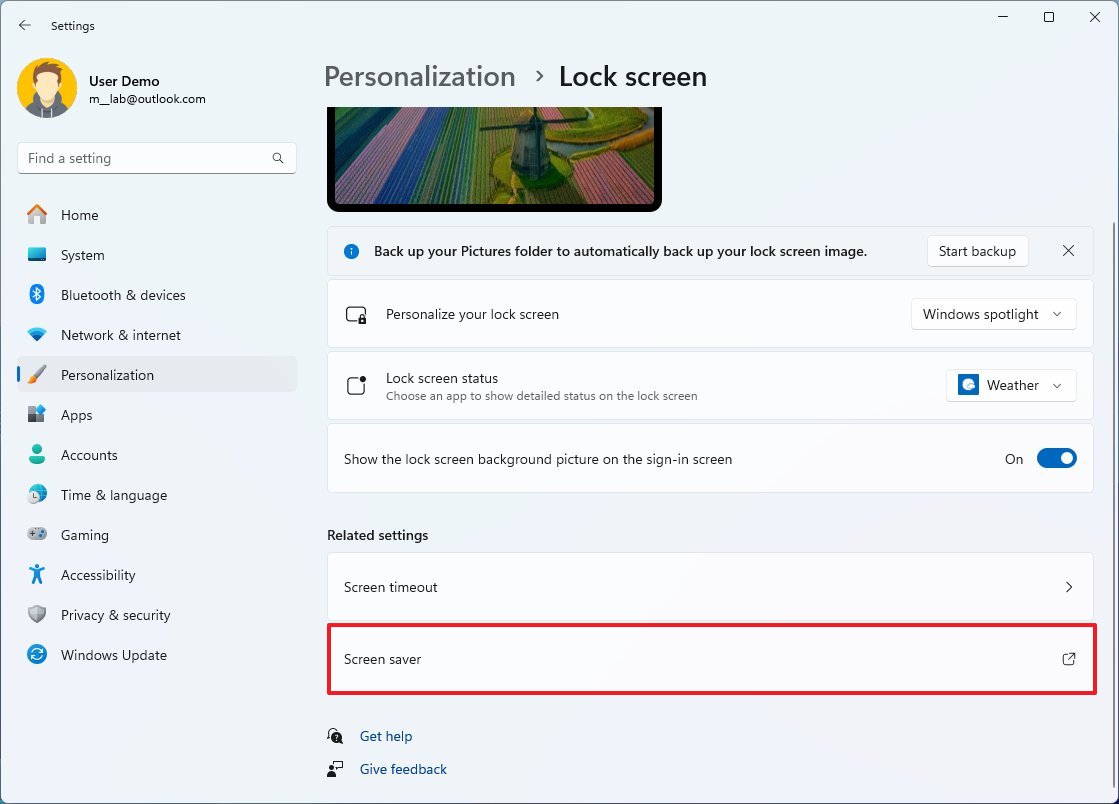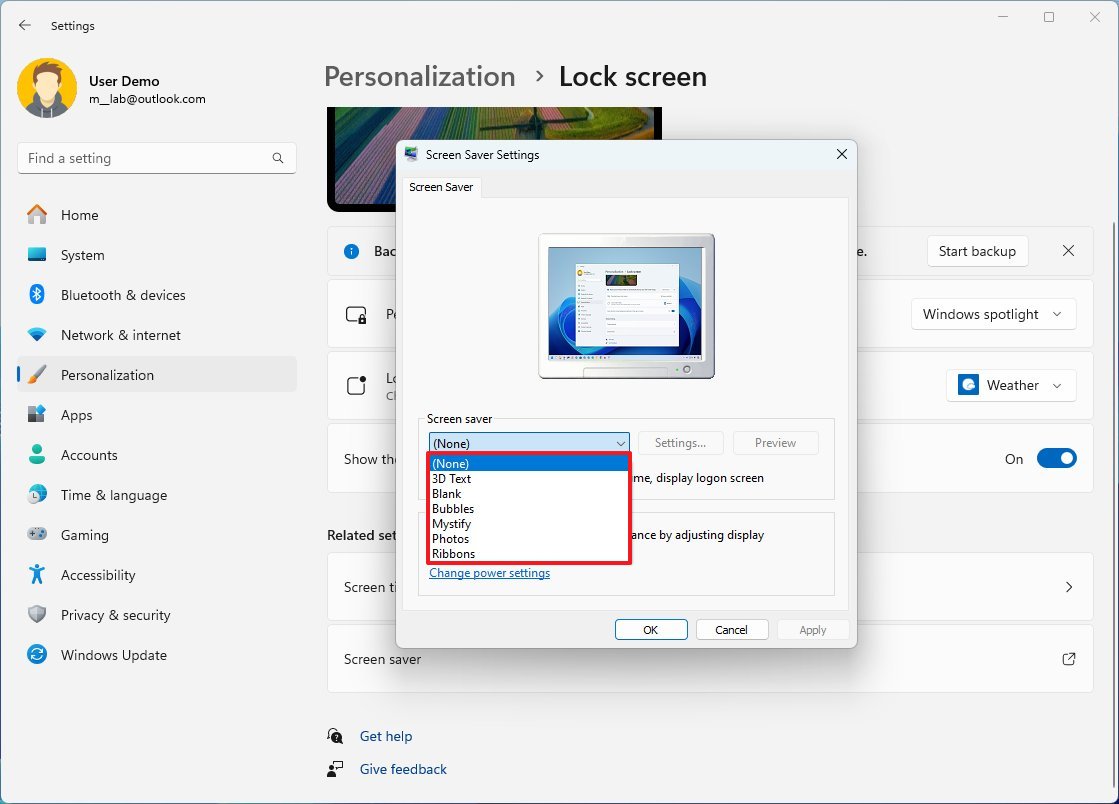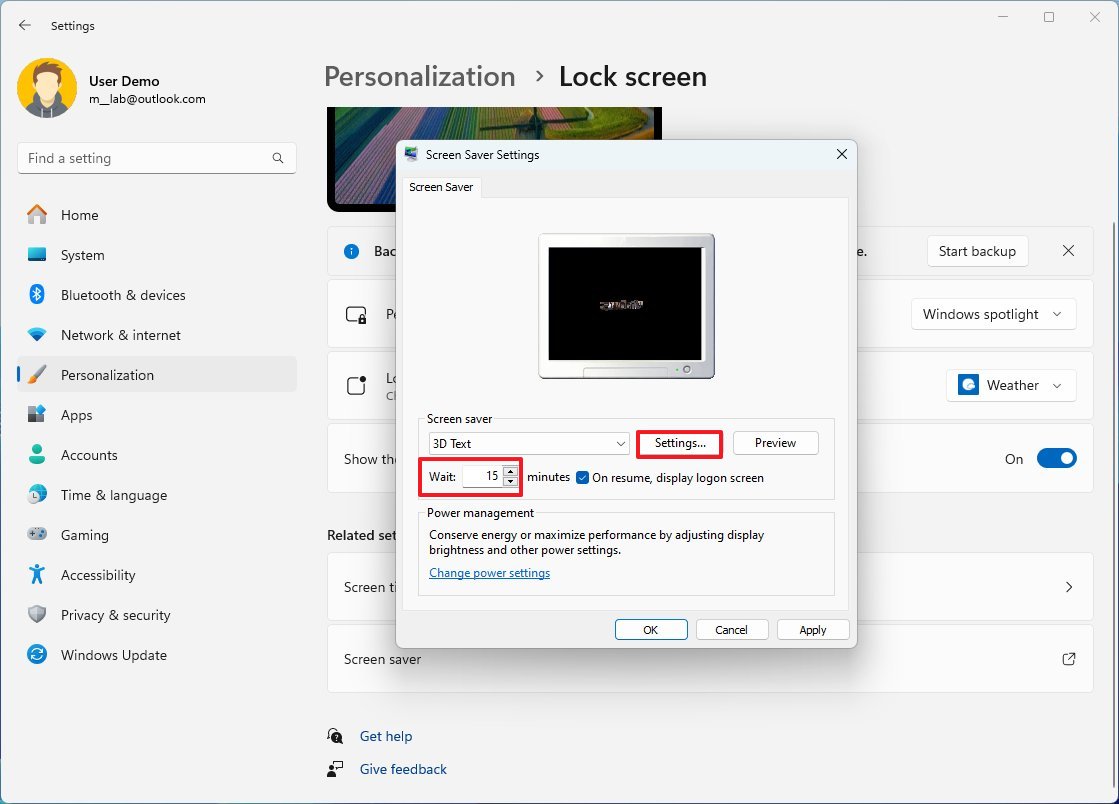
In the old days, screen savers were essential features that showed slow animations to prevent those big cathode-ray tube (CRT) monitors from producing burn-in on the screen. However, once the liquid-crystal display (LCD) monitors took over, burn-in became a thing of the past, and so did most screen savers.
Although this feature is no longer essential for computers' normal operation, Windows 11 kept these retro screen savers around for times when you need to use a monitor that's still susceptible to burn-in or ghosting or if you simply want a cool animation to play while you're away from your computer.
In this how-to guide, I'll explain some easy-to-follow steps for turning on and configuring your computer's legacy screen-saver feature.
How to configure screen saver on Windows 11
To enable and configure screen severs on Windows 11, use these steps:
- Open Settings.
- Click on Personalization.
- Click the Lock screen page on the right side.

- Click the Screen saver option under the "Related settings" section.

- Select the screen saver under the "Screen saver" section:
- None: Disable the screen saver feature.
- 3D text: Allows you to print a custom message as the screen saver.
- Blank: Shows a black screen as the screen saver.
- Bubbles: Creates bouncing bubbles using the desktop as the background.
- Mystify: Uses a mystify design that changes colors as the screen saver.
- Photos: Allows you to show a collection of pictures when the computer is inactive.
- Ribbons: Uses a ribbon animation that changes the colors of the screen saver.

- Click the Settings button (if applicable).
- Configure the available settings to your liking.
- Quick note: The only ones you can configure are the 3D text and Photos options. In the 3D text settings, you can create a custom message, control the visual style, speed, motion, surface style, and more. And in the Photos option, you can choose the folder with the collection of pictures you want to show on the screen, and there is an option to control the speed and rotation.
- Use the Wait option to specify the number of minutes of inactivity before the screen saver turns on.

- (Optional) Check the "On resume, display the logon screen" option to lock the computer automatically when the screen saver runs.
- Click the Apply button.
- Click the OK button.
Once you complete these steps, Windows 11 will run the screen saver with the settings you specified.
More resources
For more helpful articles, coverage, and answers to common questions about Windows 10 and Windows 11, visit the following resources:




!["[T]he First and Fifth Amendments Require ICE to Provide Information About the Whereabouts of a Detained Person"](https://images.inkl.com/s3/publisher/cover/212/reason-cover.png?w=600)


